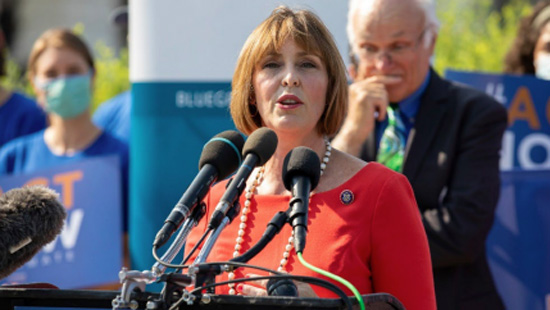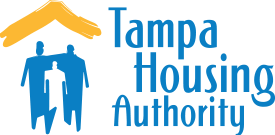Rep. Castor Focuses on Housing Crisis in Hillsborough Co., Highlights Shortage of Affordable Units
New Channel 8, Sam Sachs | Posted: Jan 14, 2022 / 05:46 PM EST / Updated: Jan 14, 2022 / 05:46 PM EST

Rep. Kathy Castor, D-Fla., discusses the infrastructure bill making its way through congress alongside environmental groups during a news conference on Capitol Hill in Washington, on Monday, Aug. 23, 2021. (AP Photo/Amanda Andrade-Rhoades)
Representative Kathy Castor (D-Fla.) held a roundtable with Hillsborough County stakeholders to address the affordable housing crisis sweeping America. Tampa Bay was no exception to the crisis, leading to a statewide price surge for months.
The past two years of the COVID-19 pandemic hit different parts of the U.S. in different ways. In Florida, the housing market went from an attractive community to a housing crisis as the sunny views and beautiful beaches pushed prices up while available inventory to buy or rent shrank.
Castor referred to a recent Zillow study that forecasted Tampa would be the hottest housing market in 2022, owing to an expected 25% property value increase and wages that won't keep up, despite recent pay bumps.
The congresswoman said the property value increases are "fantastic for our neighbors who own homes and intend to stay in their homes, or they're sellers, that's a sign of great prosperity, but it's very tough for folks out there looking for an affordable home right now. Wages are up, thankfully, but it's been very difficult to keep up with the cost of living." She said she wanted to work with the other members of the roundtable to find ways to help make housing more affordable.
"Just to frame the issue quickly, here's some data [from the US Census Bureau] about what's going on for renters across America. The share of adult renters saying their household is not caught up on rent is too high," Castor said. Citing data from the U.S. Census Bureau, Castor pointed at the population boom Tampa has seen over the past 10 years.
According to the U.S. Census, from 2010 to 2020, 230,536 people moved to Hillsborough County. The population was 1,459,762 in 2020, but the data showed there were only 599,456 housing units available. The average value of an owner-occupied home was about $216,300, according to a presentation from Rep. Castor. She said the number of housing units in the community has not kept up over time, despite efforts by community leaders.
In their 2022 housing market forecast, Zillow said, "The typical home value in Tampa is $323,040, and Zillow forecasts home values will rise 24.6% through November 2022."
Affordability is a big issue for renters across the country. When analyzing the housing crisis, the cost of living in the community is an indicator of how serious the problem will be. This is measured by what's called a cost burden for housing, as well as the average median income of the community in question.
According to the U.S. Department of Housing and Urban Development, a household is considered rent-burdened when more than 30% of its monthly income is spent on housing, whether it's going to mortgages or rental costs. As previously reported, no Tampa renter was paying less than 30% of their income to afford their rent in October 2021. Black households pay 37.7% to rent, while Hispanic households pay 35.6%. White households pay 33.1% of their income to rent every month.
Since October 2021, rent and mortgage costs have yet to drop. It's a problem seen across Hillsborough County.
"Right now, we've got rates that are literally unaffordable for the average median income within Hillsborough County," Hillsborough County Commissioner and Commission Chair Kimberly Overman said. "When you look at 30% of your funds going to housing, the rental rates currently in our environment are unaffordable for a lot of our families."
One issue exacerbating the housing crisis in Florida, according to Jaimie Ross, the President and CEO of the Florida Housing Coalition, was a series of what are called sweeps in the Florida Legislature. As Ross explained it, in previous years, money was taken out of a state program to help local governments with affordable housing, called the Sadowksi State and Local Housing Trust Funds, which were established by state law decades ago.
"Over the last, basically, almost two decades, the Sadowski Act is three decades in existence, and over the last two decades, under the leadership at the Capitol, almost $3 billion have been swept away from helping local governments to meet their housing needs," Ross said. "We have no idea where that money's gone. Just into general revenue. So, in no small part, the housing crisis...is due to those sweeps."
Commissioner Overman said during the roundtable that Emergency Rental Assistance funding approved to handle the COVID-19 pandemic's economic impacts ended up as lifelines for renters and homeowners hurt by the past two years' viral crisis.
Over $50 million in Emergency Rental Assistance Program funds have reached approximately 12,000 Hillsborough County and the City of Tampa residents, according to county-level data provided by Castor. During the roundtable, Overman said that number was closer to $51 million as of the start of 2022.
"Hillsborough County, in partnership with the city, the good news is, you know, it takes money to run these programs," Overman said. "The city and the county worked very carefully together to make sure thousands of residents actually benefitted from the Emergency Rental Assistance Program. We actually obligated $51 million to financial assistance to residents and landlords, with approximately, we have about $3 million remaining from the allocation we had."
The commissioner said 13,000 households were assisted by the ERAP program between Hillsborough County at large and the City of Tampa. She said an additional $10 million in funding was expected to come for more assistance and to be disbursed to those in need. The funding would be used for eviction mitigation and home stabilization programs in the county through partnerships with Bay Area Legal and the United Way, among others. The county continues to process applications and distribute funds to those seeking aid.
Eviction mitigation was a primary focus "since an eviction is such a lifelong barrier to housing in anyone's future," according to Overman.
Data presented by Castor also showed the poverty rate in Hillsborough County, which is currently 11.9%. Castor said that number was "way too high." She said the disconnect between income and affordable housing was big and that the Sadowski funds were supposed to help address this issue across Florida.
Ross explained the Sadowski funds were now going to be used in a more beneficial way in Florida following the 2021 legislative session. No sweeps from the funding are expected, thanks to moves by the legislature.
"We expect there will be a full appropriation of the Sadowski State and Local Housing trust funds, and for your area, for Hillsborough County, that means $15 million are going to be coming into the community," Ross said. "About $11 million will be staying with the county, and about $4 million would go to the City of Tampa as an entitlement community."
As a result of a law passed in 2021, the money for the Sadowski fund has been permanently established, though admittedly split between some programs that affect affordability, such as a sea-level rise program and a septic to sewer program, according to Ross.
Last year, "the legislature couched as being important for affordable housing, I don't know that I would argue they are not important for affordable housing, they're important for everything," Ross said. "This deal that was cut last year, which came at the highest level, from the Speaker of the House and the President of the Senate, right out of the gate last year, long before conference negotiations, was a deal that was putting more money into housing than they had been previously, because the sweeps previously, like you can see from your chart, were more than 50%. So with a 50% cut, we actually are seeing more money going to housing than we had been under the leadership in Tallahassee."
Additionally, Hillsborough County, and the City of Tampa, have had multiple construction efforts contribute to housing affordability and availability, such as the Encore District developed by the Tampa Housing Authority.
"We've been redeveloping our properties with the primary aim of increasing density, the appropriate levels of density depending on where those communities are located. And fortunately, as we've been working in the last 10 years, those communities have been located near our urban core," THA Senior Vice President and COO Leroy Moore said.
Through their construction and expansion efforts, THA was able to grow the housing district and "replace 400 units with 1,200 units, replace 800 units with 1,800 units, on the same footprint and also bring those resources, such as jobs, parks, other community amenities, to those communities that for so many years have been neglected," according to Moore.
In Encore specifically, there are now 1,100 units on site, with 662 of them subsidized and owned by the housing authority, along with another 500 market-rate units at the same location, Moore said. The housing authority is also working to purchase some condominiums, including microunits, to reach the affordable workforce and attainable housing market at the same location.
Still, housing affordability is a problem that will continue as long as available inventory of homes available for purchase remains low. While the issue seems destined to continue, there are some legislative solutions that could bring them to a somewhat earlier end.
According to Florida Housing Coalition Legal Director Kody Glazer, a few laws proposed in the 2022 legislative session might alleviate some of those burdens.
One bill proposed would help with affordable housing by building on legislation from 2020.
"In 2020, the legislature actually passed a very good bill, House Bill 1339, that says local governments can now override their own comprehensive plans and zoning codes to approve affordable housing if they're in three different zones," Glazer said.
Glazer said a newer piece of legislation proposed this year, House Bill 981, would "add mixed-use projects to that, so if a mixed-use project has an affordable housing component, local governments don't have to do a comprehensive plan amendment, which could take months or even years and can really fast track these affordable housing mixed-use projects."
If it passes, Glazer said local governments would be able to use their discretion to negotiate affordable housing as part of mixed-use properties as an incentive to fast-track permitting on new development projects.
Still, the issue of new developments being built is prolonged by rising costs of building materials, such as lumber, and ongoing supply chain problems. Inflationary pressures only add to the housing and affordability problems seen across Florida and the rest of the U.S.



